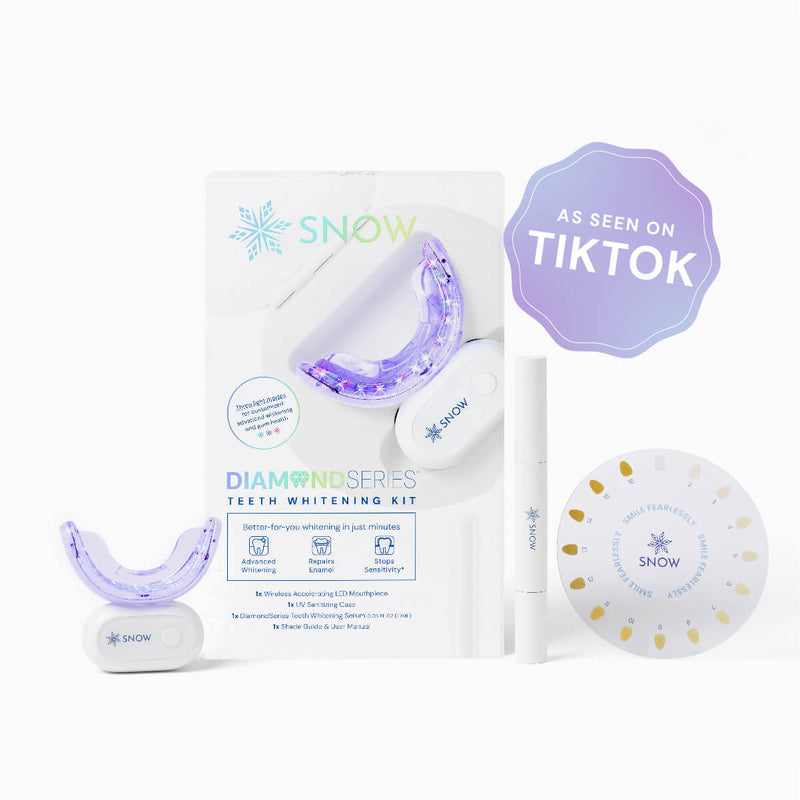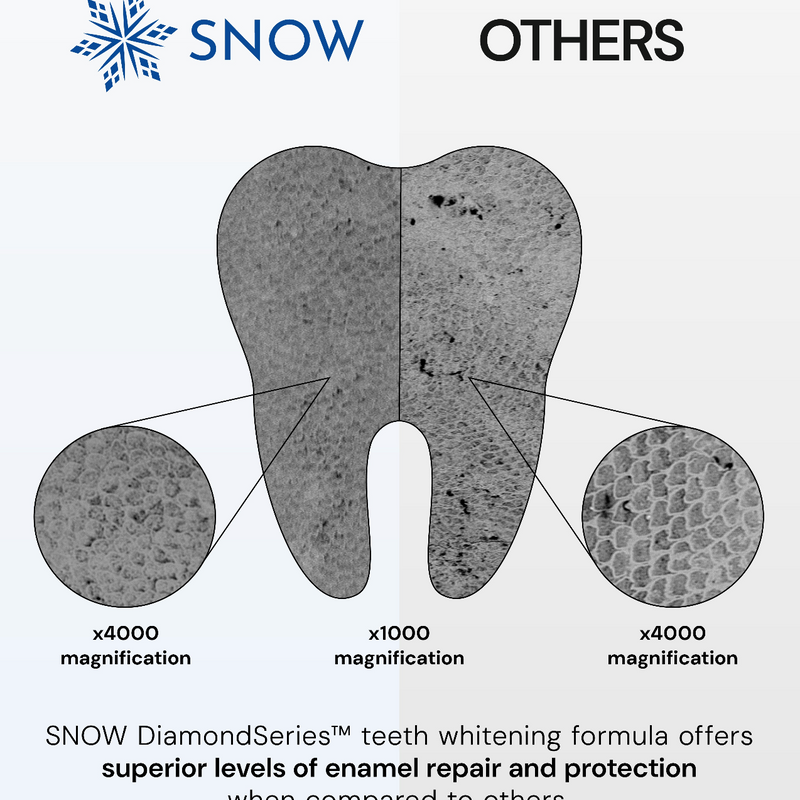Babies love sucking on their fingers and pacifiers as a natural way to self-soothe. However, many parents worry about how these habits may affect their child’s teeth.
Fortunately, most children grow out of their pacifier habit before it can cause any damage to their permanent dentition. But, if it goes on too long, the child may develop a condition known as “pacifier teeth.”
Keep reading to learn more about pacifier teeth, including how pacifier use can become a problem and how to help your little ones stop using them before it’s too late.
Pros and cons of using pacifiers
It’s a common misconception that all pacifier use is bad. However, it’s important that parents understand they should make their own decision. Pacifiers have advantages and disadvantages. Familiarizing yourself with both is the best way to ensure you make the right decision for your child.
Pros
Major advantages of using pacifiers include the following:
- Pacifiers offer children a sense of security and help babies fall asleep faster
- Pacifiers can distract and soothe a child after painful procedures, like vaccine shots or blood tests
- Pacifiers can reduce pain in a nursing infant and ease discomfort in nursing preemies
- Pacifiers are convenient and easy to clean
- During infancy, pacifiers can significantly decrease the risk of Sudden Infant Death Syndrome (SIDS).
Cons
Major disadvantages of using pacifiers include the following:
- Pacifiers can cause changes to the shape of the palate or roof of the mouth
- Pacifiers may disrupt jaw development and cause misalignments
- Pacifier use can increase a child’s risk of developing an ear infection
- Malocclusions (misaligned teeth) can occur if a child uses pacifiers past the recommended age
- If introduced too early, pacifiers can disrupt the breastfeeding process and cause a phenomenon known as “nipple confusion.”
- Unhealthy dependency may occur if a child becomes too reliant on the pacifier
- Long-term pacifier use can inhibit the growth and development of the primary teeth

What are pacifier teeth?
Baby teeth begin to form in the womb and continue to grow and shift throughout childhood. However, any disruption to this development process, such as pacifier use or thumb sucking, can result in misalignment.
Pacifier teeth is a condition that occurs in children with prolonged pacifier use. The classic symptoms, including misaligned teeth and an improper bite, typically show up between the ages of 4 and 6 – just as the permanent teeth are beginning to erupt.
How pacifiers affect baby teeth
You may still be wondering what pacifier teeth actually look like. The truth is, there are many answers to that question. For some children, pacifiers simply cause crooked teeth. However, one of the most well-known risks of pacifier overuse is a misaligned bite, such as an open bite or crossbite. The following are the most common dental issues associated with long-term pacifier use:
Open bites
Studies show that children who overuse pacifiers are approximately four times as likely to develop an open bite. In these cases, the sucking motion involved with pacifiers causes the child’s upper and lower teeth to slant outwards, preventing the front teeth from overlapping or even touching at all. This misalignment can make biting food with the front teeth very difficult. An open bite can also cause speech impediments and trouble sleeping.
Crossbites
A crossbite occurs when the upper teeth fit behind, or inside, the lower teeth when the mouth is closed. Pacifiers typically cause this bite misalignment to appear on the back teeth. Crossbites can cause many issues, including toothaches, headaches, and trouble closing the jaw.
Overjet
An overjet is a condition where just the top teeth slant outward, jetting out further than the lower teeth. It’s commonly referred to as “buck teeth” and can complicate speaking, chewing, and even smiling.
Changes to the roof of the mouth
Aside from jaw and teeth misalignment issues, prolonged pacifier use can also cause changes in the shape of the roof of the mouth. Specifically, the mouth roof may grow unnaturally narrow, often resulting in speech problems and trouble breathing.
Other issues pacifiers can cause
Lesser-known issues that pacifier use can cause include:
- Speech impediments – misalignments may affect the way a child speaks
- Eating problems – changes to the shape of the mouth may cause problems eating
- Skin problems – pacifiers can irritate and rub the skin around the mouth, leading to painful sores
- Low self-esteem – the adverse effects of pacifiers, particularly buck teeth, can be embarrassing for school-age children
Treatment for pacifier teeth
After 7-9 years, or once most of the permanent teeth have come in, self-correction of jaw or teeth misalignments is not possible. Instead, the child’s dentist will determine the best way to correct the issue or recommend treatment with an orthodontist.
Pediatric orthodontists gather valuable information, including measurements of the child’s jaw, teeth, and bite, to determine precisely what intervention they need. Most often, surgery is not necessary. The only exception may be removing one or a few baby teeth to make room for their permanent replacements.
A dental appliance, typically braces, is the preferred treatment for pacifier teeth. Braces can move crooked teeth back together, reverse a bite malocclusion (like an overbite or underbite), and encourage the teeth and jaw to move back into a more natural position. Other common orthodontic appliances include retainers, palate expanders, and headgear.
In any case, the key to a successful treatment is early intervention. However, depending on the severity of the misalignment, treatment may last anywhere from a few months to several years.
How to prevent your child from developing pacifier teeth
Typically, infants aren’t at risk of developing pacifier teeth because sucking is a natural reflex, and they don’t have their baby teeth yet. Additionally, most children cut down on their pacifier use or stop using them entirely by the time they’re two to four years old. If, however, a child is still depending on their pacifier as a toddler, a parent or caregiver should intervene.
The best way to prevent a child from developing pacifier teeth is to break the habit before any permanent damage can be done. Currently, dentists recommend weaning children off pacifiers by around age two.
Alternatively, orthodontic pacifiers are available, associated with a lower risk of developing malocclusions. Still, it is essential to wean children off pacifiers and other damaging oral habits at an early age.
The following are top tips and tricks to help a child stop using their pacifier and prevent dental issues down the line:
- Offers prizes or rewards – give the child an incentive for not using their pacifier, especially during difficult times
- Use positive reinforcement – praise the child for not using their pacifier rather than scolding them for doing it
- Keep them busy – if the child often uses their pacifier to relieve boredom, keep their hands busy with a game, or distract them with some of their favorite activities
- Practice alternative soothing methods – breastfeeding, rocking, swaying, and white noise are all ways to help infants self-soothe in place of their pacifiers
- Limit the number of pacifiers in the house – stop purchasing replacements, so when they’re gone, they’re gone for good
Is thumb sucking better than using a pacifier?
When it comes to dental issues, thumb-sucking can be just as problematic for a child’s teeth as a pacifier. These habits affect the mouth in similar ways and can cause symptoms of pacifier teeth if left unchecked. However, pacifiers are typically a smarter choice than thumb-sucking. This is because breaking a thumb-sucking habit is much more complicated than taking away a child’s pacifier.
Weaning a child from thumb or finger sucking involves constant reminders from the caregiver, and the behavior is especially difficult to control once the child goes to bed. Additionally, thumb sucking can increase the number of bacteria in a child’s mouth since their hands are typically harder to sanitize than a pacifier.
How to use pacifiers responsibly
Although side effects may occur with prolonged use, damage to a child’s teeth from using pacifiers can be avoided. Knowing how to use pacifiers responsibly is critical to preventing future misalignments and other dental issues.
Before reaching for a pacifier, keep the following tips in mind:
- Use orthodontic pacifiers, which are designed to reduce the chance of misalignments
- Never dip a pacifier in juice, jam, or other sweet foods or drinks
- Don’t force a child to use their pacifier if they don’t ask for it
- Avoid using pacifiers to delay or replace meals
- Clean pacifiers regularly with soap and hot water
- Aim to stop pacifier use past 2 or 3 years old at the latest
Summary
Using pacifiers can be a great way to soothe a crying baby, but there comes a time when they become more harmful than helpful. Consequently, if a child uses their pacifier past the age of 3 or 4, they risk developing a condition known as pacifier teeth.
Pacifier teeth refers to misalignments, such as a crossbite, an overjet, or an open bite, that occur after long-term pacifier use. These malocclusions can affect a child’s speech, eating habits, and self-esteem. To avoid these adverse effects, most dentists recommend that parents begin to wean their children off pacifiers by age 2.
Without intervention, long-term pacifier use causes permanent changes to a child’s dentition. However, there are treatment options available. Braces, headgear, and palatal expanders are all dental appliances used to correct pacifier teeth.
FAQs
Does pacifier teeth correct itself?
Once a child has developed pacifier teeth, there is no way for the misalignment to correct itself naturally. In almost all cases, intervention from an orthodontist is required. Typically, treatment includes braces, headgear, a palate expander, or a combination of dental appliances.
At what age does a pacifier affect teeth?
Pacifiers begin to negatively affect teeth at about age 2, depending on the type of pacifier and frequency of use.
Do pacifiers damage teeth?
When used responsibly, pacifiers are generally safe and can be a great soothing solution for babies. However, prolonged use can lead to severe dental problems.
What age should pacifiers be taken away?
Dental specialists typically recommend weaning a child off pacifiers starting at age 2. Additionally, pacifier use should be actively discouraged, either gradually or cold turkey, once they reach age 4.

























